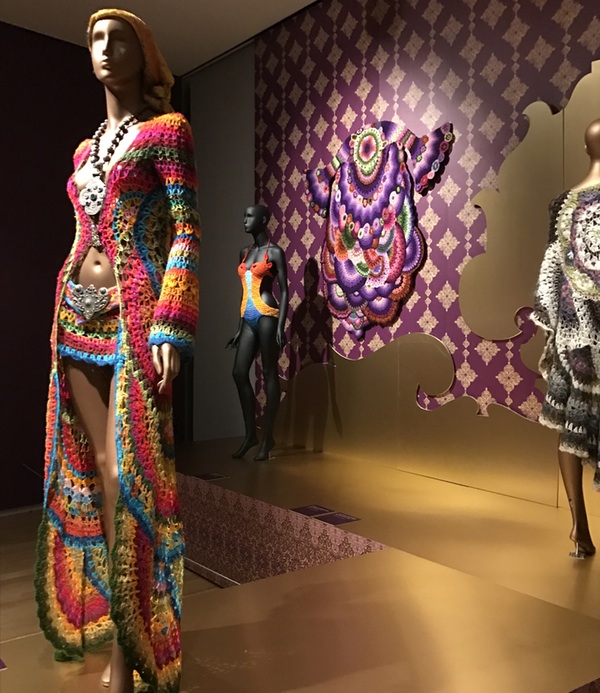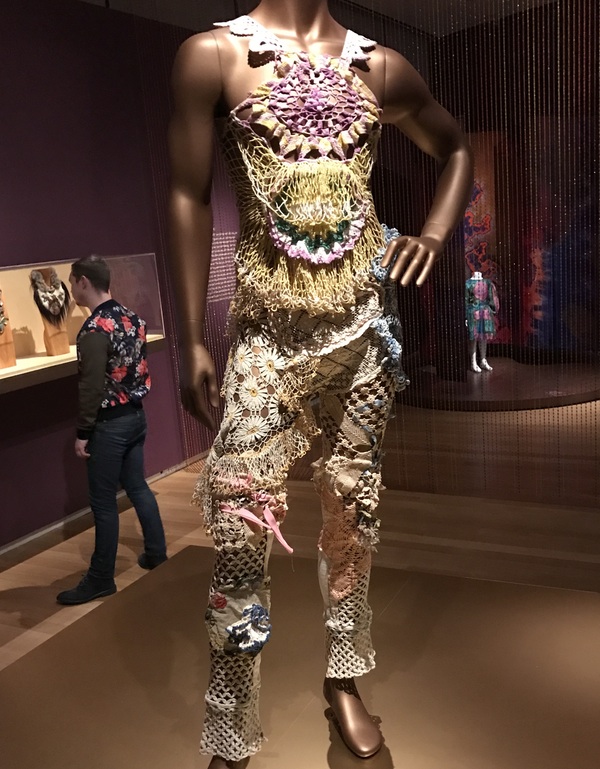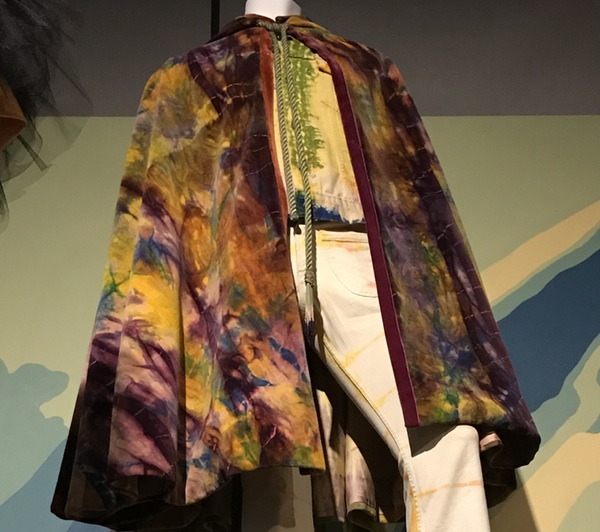The Museum of Arts and Design exhibit is called “Counter-Couture: Fashioning Identity in the American Counterculture.” But you’d be just fine thinking about it as Little House on the Prairie — if the house was part of a hippie commune.
I met Michael Cepress, the curator of this exhibit, close to a decade ago when I wandered into his design studioin the Capitol Hill neighborhood of Seattle. We bonded instantly over our love for hippie culture — mine much more of a devotion to the music of the period from groups like the Doors, Jimi Hendrix Experience and Janis Joplin’s band at the time, Big Brother and the Holding Company. He was fixated on the clothes, from the strutting Edwardian peackock looks of London in the swinging ’60s to the more homespun and hand-tooled expressions of fashion art from the Woodstock era.
I’d been driven into Cepress’ studio by an unusually heavy rainstorm, and the zipper on my raincoat would simply not budge. He regarded me up and down, smiled and said he thought he could help. While he was working to free me, I looked around his workspace, and everywhere the eye could alight there were bits and pieces of the psychedelia we both loved. We struck up a conversation, and he finally got me and my zipper sorted out. I offered to pay him, and he waved me off, telling me it was nothing. A few days later, I returned with a few CDs I’d put together for him. I titled the gift Feed Your Head, after the line in Jefferson Airplane’s trippy tribute to Alice in Wonderland called “White Rabbit.” We sat and talked though half of one of the discs, and promised to stay in touch.
Flash-forward to last Wednesday, when I caught up with Cepress for the first time since leaving Seattle for New York almost three years ago. He’s traded in his rockabilly pompadour for the shoulder-length hair and beard that he always loved in hippie culture, and he milled through the opening night reception collecting accolades every few feet. And why not? This collection of clothing is simply stunning for what it evokes — the anti-Vietnam, communal utopia so many young and disaffected Americans tried to cobble together between 1967 and 1973, when it all became co-opted by Levi’s and a few other companies who decided to cash in on what the hippies created.
And, as Cepress’ exhibit makes clear, what they accomplished is nothing less than a sudden and temporary kind of folk art. In an era when most affluent youngsters purchased ready-made clothes in stores, there’s an explosion of creativity and color in nearly every piece included. You’ll see an outfit (a men’s outfit, no less), made entirely of macrame. There are men’s capes. There’s a piece made entirely of crocheted yarn. It’s the kind of thing that one wouldn’t expect to see again in this lifetime — young people repurposing Army drab and turning a symbol of the draft and the war into something subversive . . . and beautiful.
The exhibit continues through August 20.
Last modified: July 27, 2017










